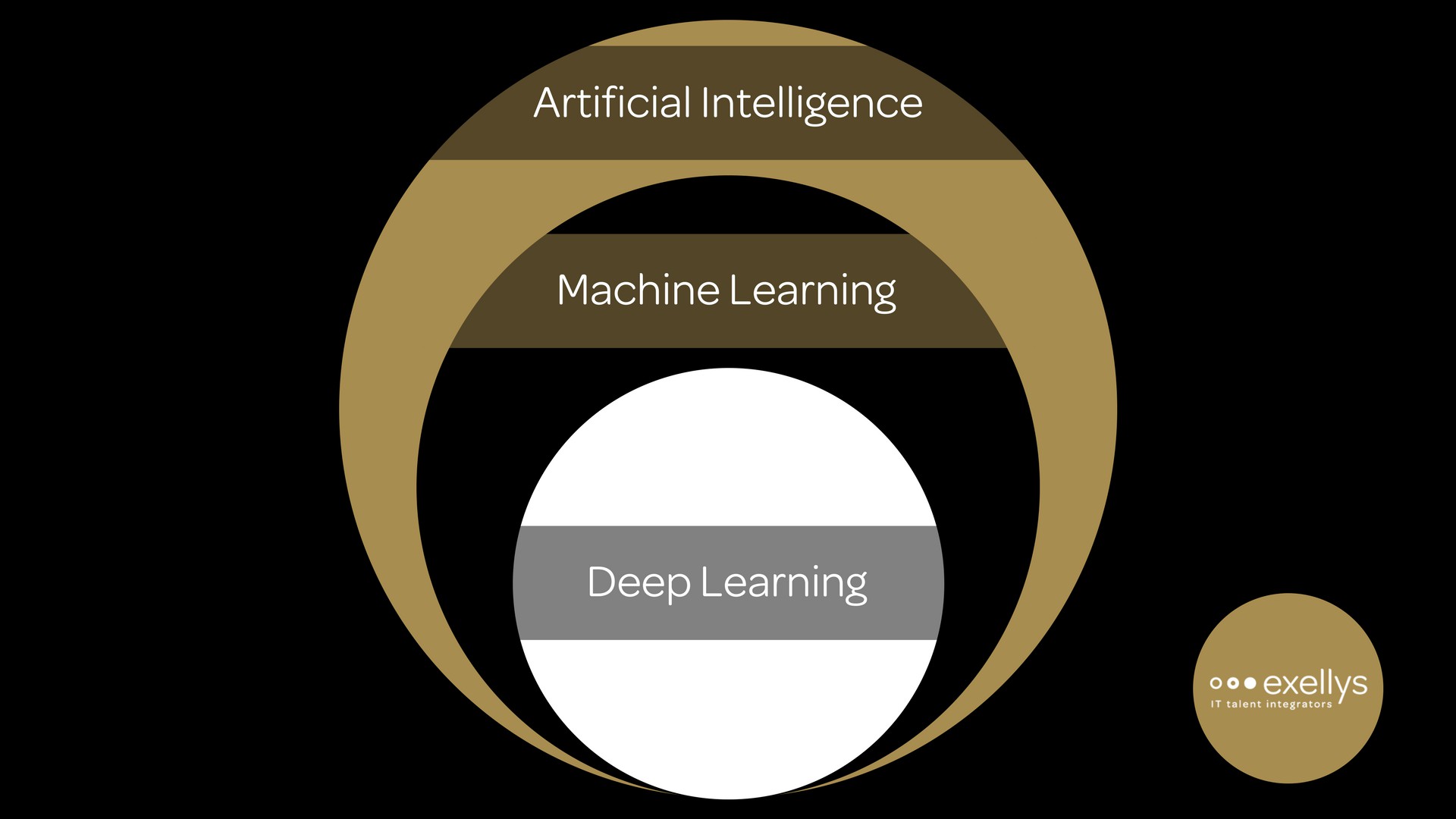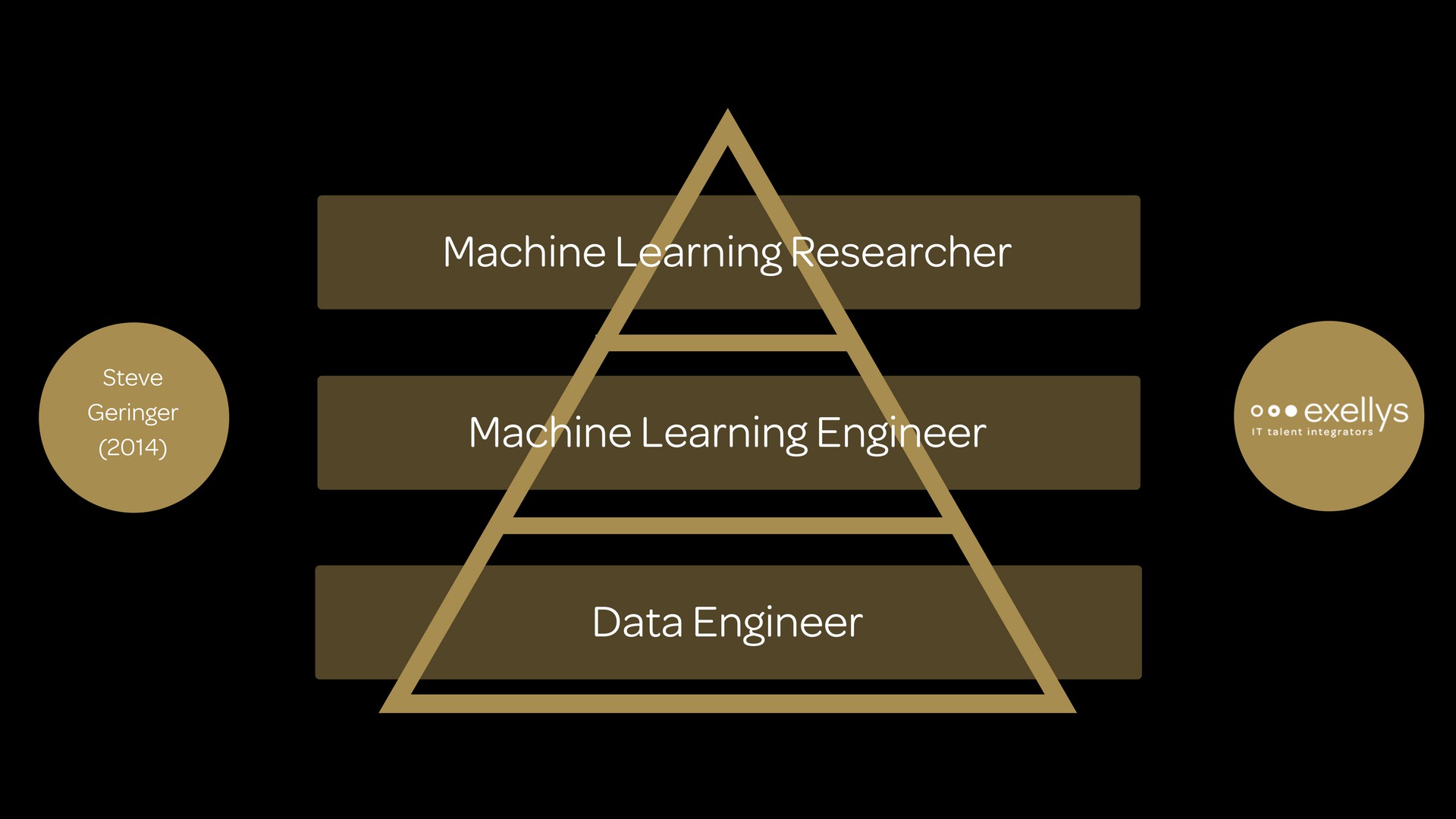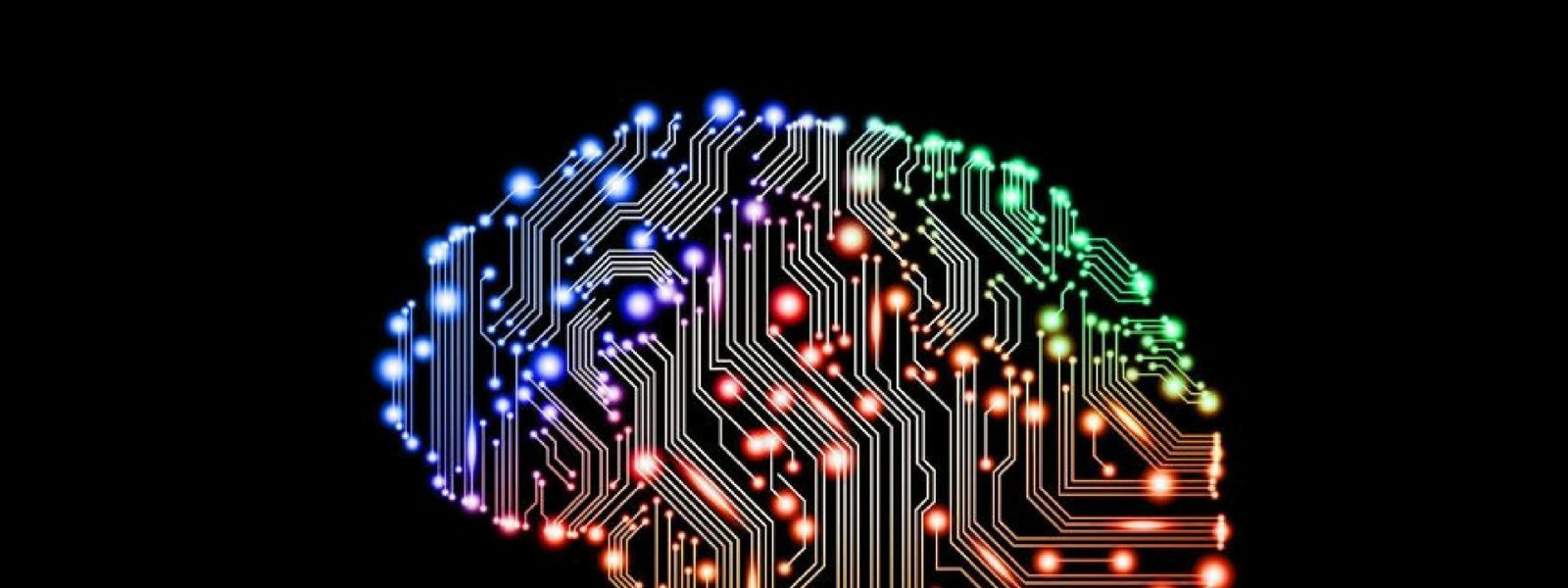Machine Learning is changing the world. This is how you stay ahead.
on 30 January 2018 for ProfessionalsNo machine in the history of mankind has a learning capacity comparable to the human brain.
Not yet. But things are changing.
Our ability to create ever more sophisticated machines means that, in the future, they may be able to challenge our brains.
Ever heard of the Singularity? It’s the premise that machines will surpass human ability – something that might have once sounded like science fiction is becoming science fact.
Wait, what?
Imagine if you were able to build upon the enormous amounts of data that you encounter and discard every day. No human is capable of that, but machines are.
That’s where 26 year old Jeroen comes in the picture. With a master’s degree in computer science, he’s been with us at Exellys for just over a year now, currently working as an Artificial Intelligence Consultant.
According to Jeroen, the only limit to machines and machine learning is that vital spark of creativity – and the good news is that that’s where humans come in.
Here’s what’s in store for you in this in-depth blog post
Before we take a closer look at the skills you need to work in the interesting field of Machine Learning you need to have a good understanding of what Machine Learning is exactly. Here we go.
Artificial Intelligence. Machine Learning. Deep Learning. The trinity of the future.
You get out your iPhone and ask Siri a question. She answers you with an uncanny degree of humor. She is an artificial product mimicking human behavior. This, in a nutshell, is AI (Artificial Intelligence) or that which enables computers to behave like human beings.
There are elements of AI also present in the image classification on Pinterest, for example, and in facial recognition on Facebook.
Then there’s Machine Learning, an approach we’re using to achieve Artificial Intelligence. It is a subset of AI which deals with the extraction of patterns from data sets. Thanks to the advances in computer science as well as parallel computing, they can now scale up to massive data volumes.
As a quick example of how Machine Learning works, imagine a room of people. Participants in a little science experiment set up by Jeroen.
Jeroen monitored the participants’ vitals and brain activity while showing them different video clips to provoke certain emotions. He afterwards labelled this data and put it in a computer system. The computers were able to use this data to signify a particular human emotion.
What does this all mean? By giving the computer labeled data it was then able to recognize similar UNlabeled data, that being emotions.
And finally, there’s Deep Learning, a technique for implementing Machine Learning. Deep Learning is a specific class of Machine Learning algorithms which are using complex neural networks.
How exactly is Deep Learning utilized in the real world? Well, let’s look at image colorization (adding color to black and white photographs). You might have heard, or seen, this being done traditionally by hand which would have been very time and labor intensive.
Deep Learning can be used to use both the objects within a photograph and their context to color the image. With this in mind, researchers from the Toyota Technological Institute at Chicago and University of Chicago developed a fully automatic image colorization system using Deep Learning and simple graphics processing units (GPUs) that are widely available. You can read the full paper on Learning Representations for Automatic Colorization here.

Below is a summary of the most important research areas and methods for each of the three groups:
- Artificial Intelligence: Machine Learning, natural language understanding, language synthesis, computer vision, robotics, sensor analysis, optimization & simulation, among others.
- Machine Learning: Deep Learning, support vector machines, decision trees, Bayes learning, k-means clustering, association rule learning, regression, and many more.
- Deep Learning: artificial neural networks, convolutional neural networks, recursive
neural networks, long short-term memory, deep belief networks, and many more.
Exploring the three different types of Machine Learning
Machine Learning is the engine that drives Artificial Intelligence, fueled by Deep Learning – and it’s this that’s so grabbed Jeroen’s attention and imagination.
He’s quick to remind us that there are three different types of Machine Learning. Jeroen explains with a quick summary with examples:
Supervised – task driven learning
Supervised learning is the Machine Learning task of inferring a function from labeled training data.
Examples: Cortana, or any speech automated system in your mobile phone, trains to recognize your voice and then starts working based on this training.
Based on past information about spam emails, the algorithm will filter out a new incoming email into Inbox (normal) or Junk folder (Spam).
Unsupervised – data driven
The overarching goal with unsupervised Machine Learning is for the computer to learn how to do something that we don’t explicitly tell it how to do.
Unsupervised learning is a type of Machine Learning algorithm used to draw inferences from datasets consisting of input data without labeled responses. The most common unsupervised learning method is cluster analysis, which is used for exploratory data analysis to find hidden patterns or grouping in data.
Example: A highly developed housekeeping robot develops a theory that there is dust under the bed. Each week this theory is confirmed as the robot frequently finds dust under the bed.
Nobody explicitly tells the robot that there is dust under the bed, but the robot learns this itself nonetheless.
Reinforcement – the algorithm learns to react to an environment
Inspired by behaviorist psychology, Reinforcement Learning is concerned with how software agents (computer programs that work towards goals) ought to take actions in an environment so as to maximize some notion of cumulative reward.
Example: Think of a game like chess. In order to figure out the best move, the players consider various possibilities and variables. They try to think one step ahead.
If we were to build a machine to play chess, we’d have to input a large number of rules to cover all these possibilities and variables.
Reinforcement Learning bypasses this step because the machine learns to play chess by, well, actually playing chess. Anyway, let’s look at a few real world examples.

Machine Learning in the real world
As you can imagine, Machine Learning is omnipresent in the business world.
Retailers
One way that retailers are using Machine Learning is through demographics data. All retailers want to know their target buyer, but understanding the past and present of their transactions just doesn’t cut it these days. Machine Learning helps retailers to project what the customers will want next.
Banking and Finance
Machine Learning is changing the world of fraud detection, utilizing Deep Learning to command thousands of data points as opposed to a linear model that can consume 20-30 variables.
Social Media and Digital Marketing
For example, Pinterest acquired Kosei in 2015, a company that specialized in the commercial applications of machine learning technology. Most importantly for Pinterest they were focusing on content discovery and recommendation algorithms.
Since then Pinterest hasn’t looked back, and machine learning now touches nearly every part of their business, from content discovery to spam moderation.
Facebook and Google are also using Machine Learning to push their respective ads to relevant users.
Healthcare Providers
Healthcare providers can use Machine Learning to diagnose deadly diseases based on the symptoms of patients and tallying them with historical data of similar patients.
The future of the workforce: or the workforce of the future?
Doesn’t this imply though that some people’s jobs will be rendered obsolete? Jeroen argues that yes, AI and robots will take our jobs: but better ones will emerge for us.
Check out this Ted Talk for an in-depth look at what jobs AI will overtake – and which ones it won’t.
While that may seem too futuristic or far-fetched for some, you can’t deny that machines will clear the way for human innovation simply because humans will now be able to focus on more meaningful, useful tasks rather than getting bogged down in the mundane drivel that clogs up our lives.
Here are some ways that Machine Learning will impact the lives of workers in the near future:
- Gartner has predicted that by 2021, 40% of IT staff will be “versatilists,” holding multiple roles, most of which will be business (rather than technology) related.
- Gartner also predicts that in 2020, AI will in fact create more jobs than it will eliminate – creating 2.3 million jobs while only doing away with 1.8 million jobs.
Jeroen insists though – don’t panic! Now is the time to future-proof yourself. There are many skills needed to work in Machine Learning, and as it’s such a new discipline, there are more cropping up as time goes on. People are learning new skills and new ways of thinking in order to fit themselves in with the technology that’s being created, which is extraordinarily exciting.
Let’s have a look at some of those much-needed skills. How many do you already have?
Must-have skills to work in Machine Learning
It stands to reason that different data professionals possess different degrees of machine learning talent.
As interest in Machine Learning continues to flourish, demand for professionals with the following skills will also grow.
Could you find a single individual with the skill set to cover each area? Jeroen thinks it’s possible, but unlikely.
Inspired by Steve Geringer’s Machine Learning Skills Pyramid v1.0, here are the areas of work that need to be populated with skilled professionals:

1. Machine Learning Researcher – creates algorithms
Skills/qualifications needed include: PhD or MA in Robotics, Machine Learning, Cognitive Science, Applied Statistics, Engineering, Operations Research, etc; research and creation of new mathematical modules and algorithms; establishing of new paradigms
2. Machine Learning Engineer – applies algorithms/create solutions
BS or MA in Computer Science, Maths; skills in software engineering as well as data analysis, ML algorithm selection, cross validation, etc.
3. Data Engineer – creates data/software infrastructure.
Works in data extraction, transformation, scraping, joining, cleaning; summary statistics, counting and sampling on request, etc.
The future is yours for the taking
With help from Jeroen, we’ve looked at what Machine Learning really is, and how it connects to Artificial Intelligence and Deep Learning. We also looked at how these disciplines will impact jobs in the coming years, and the skills needed to be a successful data scientist in the near future.

So, how about it?
Have we really got you worked up? Feel like you have what it takes to work in Machine Learning? Get in touch with us today and let’s get the ball rolling!
Tags: career , exellyst , Machine Learning , Software



